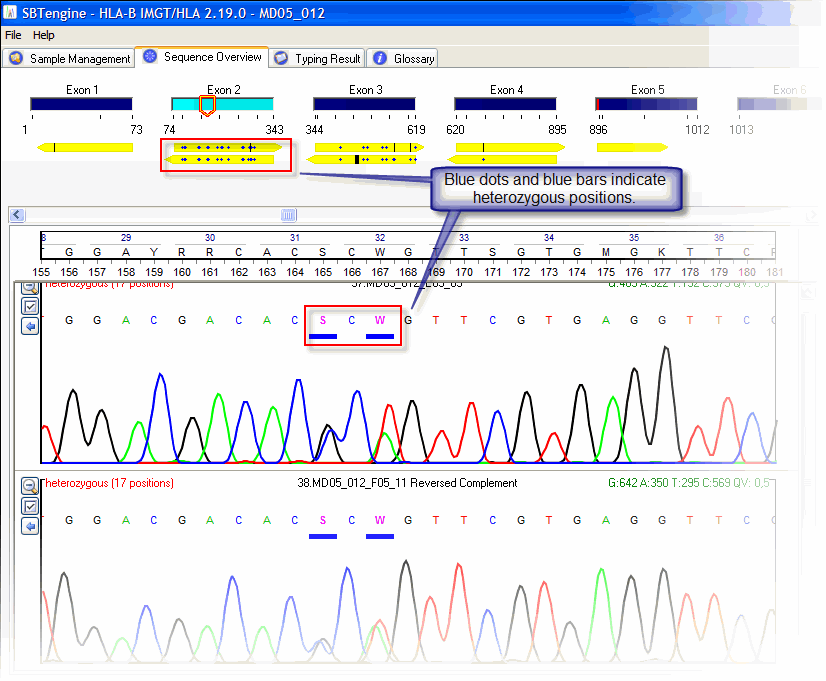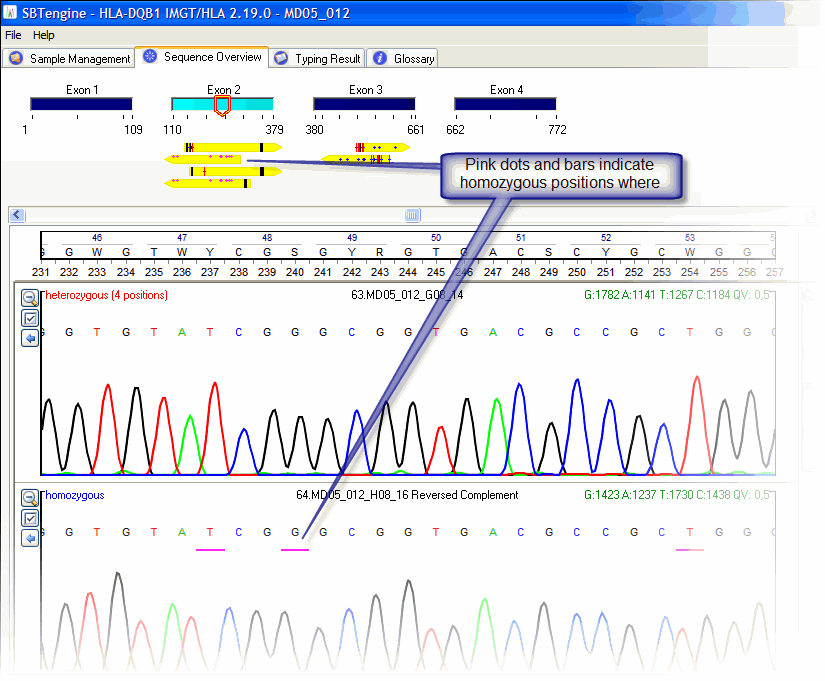Contents
-
Homozygous versus Heterozygous
Allele assignment
SBTengine is designed such that can it discriminate sequences derived from either homozygous or heterozygous samples. Even more, SBTengine distinguishes sequences that were obtained by allelic separation either physically, group specific amplification primers (GSAP) or gene specific sequencing primer (GSSP).
In a single sample analysis you may include sequences representing only one or both alleles. SBTengine can make this distinction as it assumes that no polymorphic positions (PolyP) will be present when a single allele is sequenced. A polymorphic position is here defined as a nucleotide position to which a letter from the IUB table (not being G, A, T, C) is assigned. The number of the PolyP's is indicated above each individual chromatogram. In case less than ~3 polymorphic positions are found you are advised to check these positions, just to exclude that these polymorphic position were due to sequencing errors.

If there are no polymorphic positions within the particular chromatogram present this is depicted in a clearly distinguishable format such that it can be easily discriminated from chromatograms in which one or more base pair positions are polymorphic.

As in most cases the exons are separately sequenced and analyzed individually by SBTengine, a sample may appear homozygous for one exon and heterozygous for another exon. This is in most cases due to the fact that the two alleles do not differ from each other in all exons. Alternatively, this phenomenon may occur when for a particular exon the sequence of only a single allele was determined. This may have been done deliberately, but may also be the result of a bad (quality) sequence of the other allele (that was rejected from the analysis) or even worse that the applied SBT strategy did not include the other allele. In the latter case, final allele assignment may not be possible or even may be wrong.
Homozygous and Heterozygous Positions Overview
SBTengine indicates the heterozygous postions and the homozygous positions where the two alleles in the sample differ. This overview is verry helpfull for analysis.
Heterozygous postions in the sequenced sample are indicated by blue dots in the yellow arrows and in the chromatogram by blue horizontal bars underlining the heterozygous postion. In the chromatogram it is also indicated whether a sequence file is heterozygous, including the number of heterozygous positions.

Homozygous positions in the sequenced sample where the two alleles differ are indicated by pink dots in the upper part of the yellow arrows and in the chromatogram by pink horizontal bars underlining the homozygous postion where the two alleles of the sample differ. In the chromatogram it is also indicated whether a sequence file is homozygous, including the number of homozygous positions.




